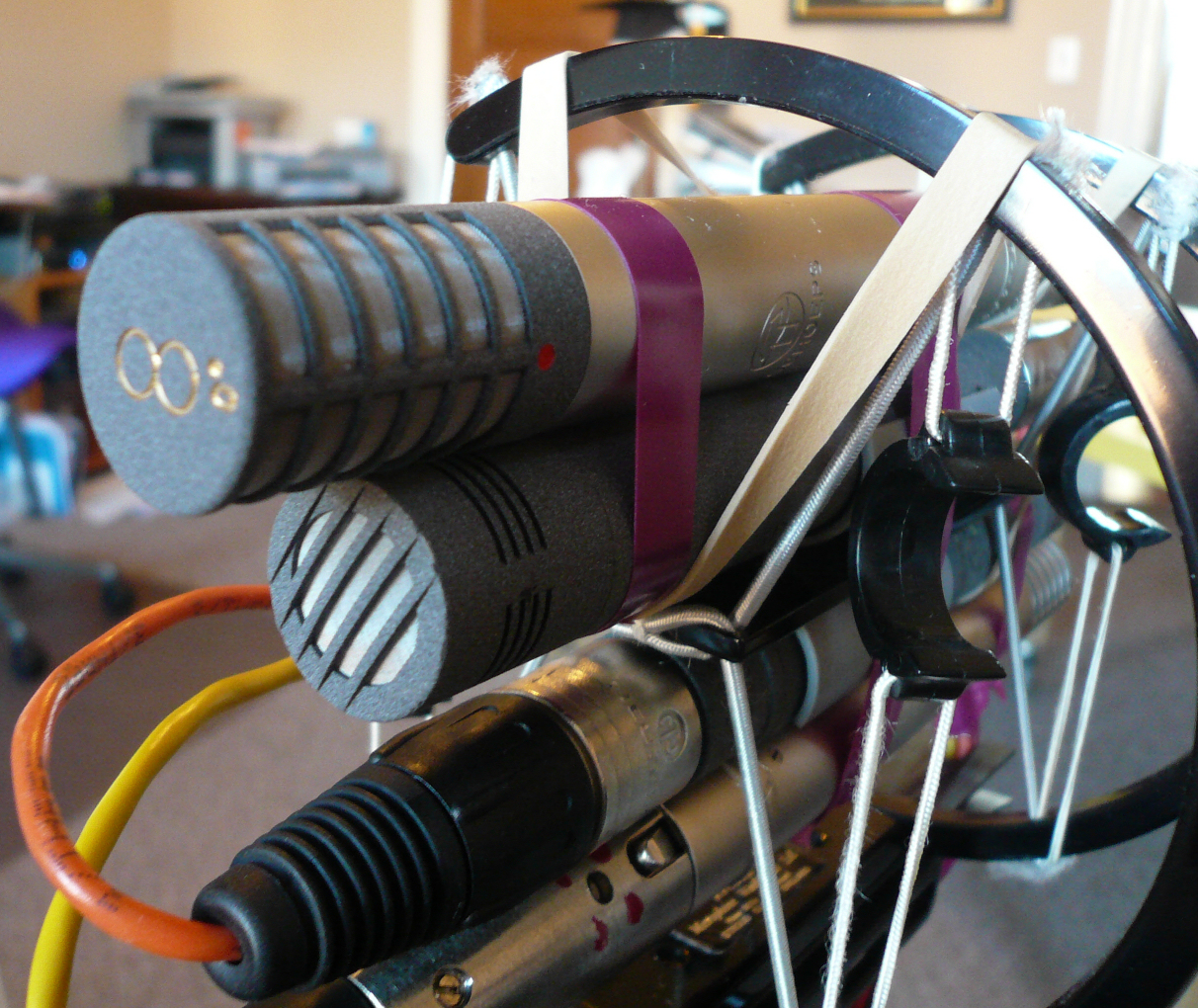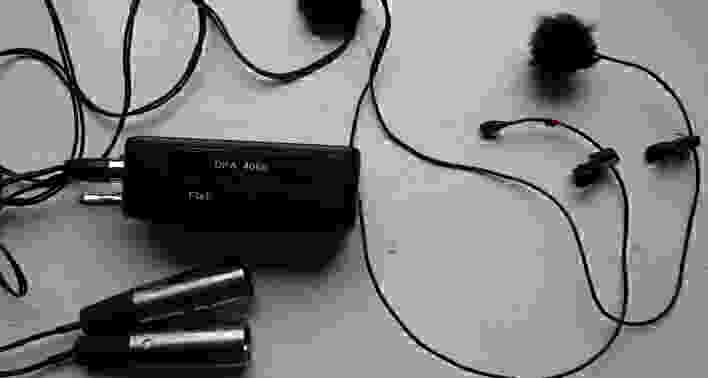nature recording gear
This is some of the gear I use, remember, in a previous life I was a professional recordist, there are less expensive ways to be a sound recordist. The most important element to any recording system is the microphone, it has the biggest impact on the character of the recording. Microphones are like artists brush : you have several to suit different recording circumstances. For stereo recording I typically use either MS or ORTF (French broadcasting standard).
Certain microphone arrays are more flexible than others. This specific photo shows a four mic array. Pointing towards the right is an MS pair, MS stands for “Mid-Side” to the left is a XY array using two “sub cardioid” or wide cardioid microphones. This array allows you to adjust the width of the soundfield after one has recorded it.


I am the inventor of the so called “gregga array” which is an adjustable microphone mount constructed of four arms, adjustable in pairs of two, that allows four (or more) mics to be placed various distances from the center point. Any of these mic arrays typically mount to a lightweight camera tripod. My contraption was constructed in several hours time with about $12 in hardware store components.
A word about wind protection, the bane of the field and nature recordist is wind. There are many over the counter windscreen products on the market, the best first line of defense is being aware of microphone placement. Put it behind a tree, wall or your torso. One can also very inexpensively make a windscreen with some hardware cloth, fleece, or fake fur.

Sometimes you need to be able to record in a stealthy manner, whether its something that you aren’t supposed to be doing or you don’t want to pollute the recording environment with the subjects knowledge that someone is walking about with live mics. For some reason people are more sensitive about this than they are with a camera. Same idea. Needless to say this setup was purchased from Core Sound and allows a quasi-binaural soundfield when mounted on either side of the head. I have a black baseball hat which helps hide the fuzzy windscreens. In this photo the windscreen is removed from one of the mics. The box you see is a battery powered preamplifier that can output to either a 1/8″ mini jack or two XLR connectors. I have a consumer mini-disc player that I like to use with this rig, very small and inconspicuous.

The blue Grace Designs Lunatec V3 above provides all of the above functions and has a high pass filter, analogue to digital converter and level meters. It also allows level adjustment on the outputs. Keep in mind that the preamp is for some recording systems optional equipment since many recorders have a built in preamplifier, the quality of built-in preamps vary wildly so an external dedicated preamp may be desired.
The final element in the recording signal path is the recorder. There are many options and price ranges for these things, if the quality of the microphones is very good and the preamp is good the quality of the recorder is not as vital.. For many years I used a professional mini disc recorder, left, that combined with a professional front end, allowed me to make very quiet recordings. This recorder packed 74 minutes of 16/44 audio onto a single convenient disc, that doubles as an archival medium or back up copy. My newest piece of equipment pictured above the blue preamp on the right is the Sound Devices 744t. It records to both hard drive and CF cards. The 744 only has two preamps so the need for the addition of the Lunatec V3 becomes apparent.

When recording in very quiet environments it is important to be able to hear what you are recording, I use “closed” back headphones that seal out the outside world to allow me to better hear the details of what I am recording. Though I feel it is equally important to take off the headphones and critically listen to what you are recording with your own ears, there are no better microphones than the ones on your head.

The biggest problem to overcome in the field recording industry and in the wider computer industry is battery life. I use gel cell batteries that are similar to what are typically used in motorcycles and small tractors. My battery system shown at right, by EcoCharge provides two voltages, one for the preamp and one for the recording deck. Problem comes down to weight, these batteries, though portable, get pretty heavy after lugging them through the underbrush for a few hours.